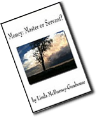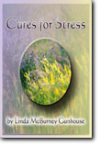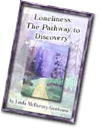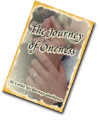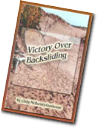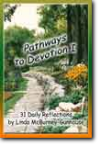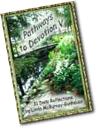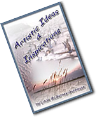Artistic Ideas & Inspirations
Books > Creative
Artistic Ideas & Inspirations
Summary
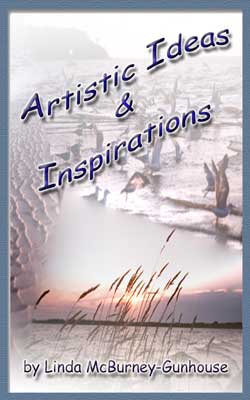
Have you ever thought of writing stories from your own
life experiences? Perhaps you have done so many interesting things that
you know it’s time to write it all down. Or perhaps you would like to
one day share your stories with your family. In this book you’ll
discover proven writing techniques that will teach you to write and
develop your stories from start to finish. You will also receive some
tips on getting your work published. Filled with practical hands-on writing ideas, you will learn how to develop the skills to become a true story-writer.
Sample
Chapter 1 - About Art
What is Art?
When we think about art, we think of paintings, and all the many beautiful artworks we may have seen in an art gallery. We think of paints, canvases, water, cleaning cloths, crayons, pencil crayons and watercolor wells. We think of a color wheel, brushes, a palette and linseed oil. We may think of famous artist places like the Louvre in France, or Greenwich Village in New York. We may think back to our school days and art classes we took then. Art means something different to everyone. But being an artist presents a world of wonderful possibilities, as we dare to create something new and different, unique to us, and therefore, unique to the waiting world who will one day admire even the simplest, but perhaps most stunning portrait or image they have ever seen. Art presents possibilities that are impossible to others who are not artistically inclined. If you are an artist, you have a great calling to present your work to the waiting world!
The Art World
Artists are usually, but not always, influenced by the work of other artists. We may be impressionists, abstract artists, pop artists, paint in realism, surrealism, primitivism, pointillism and so on. How fascinating to explore the works of great world-renowned artists like Leonardo Da Vinci, Salvador Dali, Claude Monet and Canada’s own Emily Carr and the Group of Seven, to name but a few. We learn so much about history, people that went before us, ourselves and the world in general from art. And art does not have to be perfect or complex to mean something, neither does it have to be complicated. Even children’s art is something fantastic and special to us. It offers something more — the simplicity of children’s art comes from a pure, unadulterated view of the world as seen through innocent eyes. This art we tape to the refrigerator and keep forever because it gives us a pleasant memory and hope.
Dare to be Different
Generally, artists and creative thinkers walk a different path entirely from the rest of the world. This creates challenge, perseverance and perhaps great financial difficulty. The term “starving artist” is not far from the truth. Few artists really get paid for their work, so this can become discouraging when you have to work at a job for money in order to pay to do your inborn need to create. In my case, after many years of working in office jobs that did not fulfill my need to create, God blessed me with a husband who allows me to create full time. Along with my creative pursuits, I am also a teacher, and many times my desire to teach has taken me out of my own creative world at home into the very creative world of children. Yet I have often had to choose between the two since teaching requires full-time attention, and so my creative pursuits must be put aside until I have more time. Some artists commit themselves to full-time, but still must find another source of income to support themselves. I wholeheartedly congratulate any artist who forges ahead and devotes their life to what they love to do, and indeed are born to do. They are in a class with the great masters who weren’t recognized in their time, but still, provided invaluable art for the rest of us to enjoy and be inspired by.
More Than a Hobby
A hobby is when a person has a passing interest in something, and tries to “get to it” when they have some spare time. Some people might enjoy cooking exotic foods, but they only do this on occasion. Others might enjoy woodworking, and it is only seasonal, especially if they make lawn ornaments or bird houses. It’s an enjoyable hobby, but it’s not a passion or something a person takes seriously. But if you are truly an artist at whatever craft you feel most interested in, or are drawn to again and again, it is likely this is your special talent. But you won’t even know it until you start doing it. For me, I was drawn to art when I was still a very small child. I loved art and looked forward to creating things. I may have started with coloring books and crayons, but eventually I moved on to pencil crayons, and then finally watercolor paints when I was older. Drawing and sketching, even doodling was much more than a past-time for me. I was almost obsessive about it, and rarely left home without a pad of paper and pen in my purse.
But I have done other things that came and went, like dried flower arrangements, candle making and paper making. While I enjoyed them at the time, eventually I quit. When using wire for making wreaths, I had one too many pricks in my finger, and for making candles, sometimes the heat from melting the wax would splash and this proved to be too much for me. Paper making using screens was interesting, but this was too messy for me. Besides, I wasn’t sure what to do with all the pretty, but course paper I had made. You can only make so many gift bags before you realize that the time it takes isn’t worth it, especially when you can purchase one for .50 cents in a dollar store. You know that your hobby turns into a passion when you forsake all else and commit to it seriously, giving it more time. When you become lost in your craft, and people start taking more than a passing interest in it, you are now becoming a true artist!
Practice Makes Perfect
You don’t have to have a Fine Arts degree to know that art is more than just splashing some paint on a bare canvas. It takes some training that will involve skill, practice, practice and more practice. In every artistic work, some knowledge and skill must go into it. I once took a course from a friend in an art club I belonged to, who was a successful artist because he brought a simple, but popular concept into each and every painting he did. People loved his work for its naturally raw detail of wild geese, moose, or deer against a backdrop of a forest. He understood composition, and most important the subtle shades of color which complement one another. And color is what he taught — hues and contrast. You take two tubes of paint — one white and one black and then you start experimenting. You take Cadmium Yellow, add some white and watch the hues lighten. Then you take that same mix and add some black and watch the yellow-white mixture begin to turn grey. Then you contrast these colors with the opposite colors on the color wheel and watch the dynamics of your painting unfold. Practicing such techniques lead to great paintings.
Original Art
Every artist soon develops their own style and taste. After experimenting with painting or any other medium, after awhile the “you” factor emerges. Your art work becomes distinctive and stands out from the work of others, especially when you use your own material for ideas. In your lifetime, you may have only a few really good distinctive paintings or photographs that bear your mark and no one will ever be able to exactly duplicate it. That’s when you can start to say, “This is mine. It’s original art.” Many wonderful works of art have been born out of mistakes. I once subscribed to a fibre artists magazine and many of the articles demonstrated step-by-step how a new artistic piece developed from experimenting and making mistakes. Some of the works created were amazing! One artist was using photocopy transparencies with her fibre concoction and made beautiful wall-hangings. One of the workshops I attended in my local art club used wax crayons which were melted and then applied on ordinary poster paper. I came up with colorful scenes that looked like underwater whales, or stormy summer skies. What fun we had experimenting!
Sources of Inspiration
Many artists enjoy the solitude of painting, writing, or designing any kind of craft imaginable, like jewelry, sewing, glasswork, working with clay or wood sculpting. But solitude can actually hamper creativity and cause stagnation if too much time is spent alone. There are some very effective ways to stir up creativity and be once again inspired to create wonderful and beautiful things. Some of the ways to get inspired is to go to art galleries, attend art show openings, go to art stores and craft shows. You can also search the internet for ideas. There are also some great art books available in your local library. Even better, sometimes a walk in a park or a drive in the country will still the mind and provide a peaceful atmosphere for creativity. A change is often what is needed to re-charge our creative batteries and stir us on to create and re-create new inventions.
One of the best ways, by far, is to join a local art club and work side-by-side with like-minded artists who enjoy creating art. Here you will find a steady supply of inspiration, and likely make friends too! Most clubs offer workshops and some have their own gallery, host art shows and also find other avenues for showing and selling your artworks. Regardless of your involvements in the art world, always keep yourself inspired and encouraged by thinking, seeing and imagining art. Sometimes a single image will catch your eye and be enough to inspire you to do a painting or use your camera for artistic photographic shoots. Most importantly, HAVE FUN. You need to enjoy the pursuit of art, no matter what medium interests you. Don’t listen to negative naysayers. Believe in yourself and believe that you are talented and give yourself a chance to try whatever your mind and heart is leading you to try.
Freedom to Express
The term “artistic licence” does not, in my opinion, mean that everything created is truly artistic or worthy to grace someone’s wall. But someone else may disagree. Art is a very personal matter and what someone sees as beautiful, someone else does not. When I first started painting (I started in watercolors), I painted trees because it is one of my favorite subjects to paint. In a winter scene, they were white with small black bark markings and the branches were straight and reaching up towards the sky. I liked the effect they had on the rest of the painting (which included a grey building and lots of snow). But a fellow artist looked over my shoulder (during an art club night workshop) and said my trees were “not done right.” Then she proceeded to show me how a “real” tree should be painted. I was deeply crestfallen (are all artists as sensitive to criticism as me?). I liked my trees, but her sharp criticism jarred me enough that I wanted to stop painting for a very long time. But God sent an angel that night who had been a long-standing member of the club, noticing the negative comments that had nearly devastated me, and said simply, “I like your trees.” So I regained some psychological balance and continued to paint in spite of the negative comments about my trees.
Criticism is sometimes inevitable, but usually me, the artist is the hardest critic — I constantly look at my work and usually feel that I could have done better. But I am not creating something to be perfect. I am doing this because I love to do it, and usually this shows up in my work! Every artistic person must always find the balance between job satisfaction and doing the job to please or impress someone else. It is wonderful to be able to do both!
Artist Networking
Some of your greatest inspirations and affirmations will come from fellow artists. When I say artists, this can mean painting, photography, jewelry making, scrapbooking, sewing, floral arranging or whatever is artistic to you. Artistic and creative people need constant affirmation. This is something we can do for each other. I can honestly say that whenever I have been a part of a club, a gallery member (I am currently a member of two) or some other artistic organization, it has provided me with ideas, public exposure to my work, and more than anything has re-inforced my resolve to be an artist full time. I love it when I see people who have abandoned a normal 9-5 job, to pursue their art full time. This is not always possible or even easy to do if your work doesn’t continuously sell, but I know people that persevered and now make a living full-time just on their art work alone. One artist I know had an area she rented in an open indoor market place year ‘round. Eventually she was able to rent a store in this same complex and also invite other artists to share her space for a nominal fee. Talk about creative thinking!
Artists should never be shy about their work. I discovered when I first started producing home-made photo cards, that people said they liked my photography. When I saw them open a card or look at my cards, the look of delight on their faces was so PRICELESS, it drove me forward to relentlessly take pictures and keep creating these cards.
Creating for Creativity Sake
You can go as far as you want with your art and creative pursuits given you take the time, really want to do it and have some financial security to back you. But also be prepared that if you choose the commercial route, where you create almost strictly for financial reward, that big chunks of time will now be devoted to either art shows or craft shows, not to mention business and legal requirements. Your art has now become a business the same as any other kind of business. But if it is worth it to you, then you won’t mind paying the price to make it all happen.
But just a word of caution is on order. The last thing you want to do is complicate your life with material gain since this can be one of the greatest roadblocks to creativity. It might just steal away that important idyll time where your mind is at rest and creative ideas are jumping around in your head waiting for you to do something with them. If you are focused on the many things you must do in order to prepare for an art show or craft show, you will have to learn to be creative while under pressure. I’ve done it many times, but it’s left me with less than satisfactory results. I like to take my time to really perfect a painting. I may not take long to sketch it out, or even to complete a painting, but I like to go back to it at least for a few days and tweak this and that until I can look at it and be completely satisfied with the end result. You can’t always do that when you’re under a lot of pressure to finish things before a certain deadline.
My fondest memories are when I first started watercolor painting. I would just pull out my little bag of supplies, pour some water in a margarine container, sit back and dream, and then paint the picture in my mind. I like to paint winding roads, meadows, rainy skies, prairie grass and summer skies. As I painted, I’d lose myself in the painting and feel as if I was there. I’d lose track of time and not even once think about whether or not I could sell my painting. Sometimes I would show my work to people at the office and they’d ask me to paint a similar one, only larger. And I would, but it would never be the same since now I must perform a work of art under completely different circumstances. So just creating art for art’s sake is, to me, really the best way to create something.
Buy
Currently this book is sold as an e-book only and there is currently no printed version. Although this book is sold in multiple different countries, it is currently in English only.
This book is available at the following sites:

